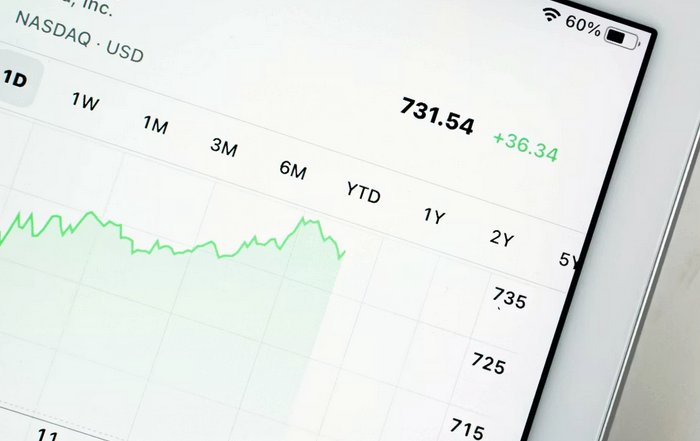The Intersection of Education and Workforce Innovation in 2025
A New Strategic Imperative for Business and Society
In 2025, the intersection of education and workforce innovation has shifted decisively from a conceptual debate to a core strategic priority, reshaping how organizations across the world identify, develop, and retain talent, and TradeProfession.com has deliberately positioned itself as a trusted guide for executives, founders, and decision-makers who must interpret and act on these changes in real time. As automation, artificial intelligence, and digital platforms redefine the nature of work in markets as diverse as the United States, the United Kingdom, Germany, Canada, Australia, Singapore, South Korea, Japan, South Africa, and Brazil, the long-standing separation between formal education and professional employment is dissolving, giving rise to an integrated ecosystem where learning is continuous, credentials are increasingly skills-based, and organizations are evaluated not only on financial performance but also on how effectively they cultivate human capability as a driver of resilience, innovation, and long-term competitiveness.
This transformation is visible in the way major economies respond to technological disruption, demographic shifts, and geopolitical uncertainty, whether through the skills-first hiring initiatives championed by LinkedIn and IBM, the apprenticeship and vocational systems refined in Germany, Switzerland, and the Netherlands, or the large-scale reskilling programs promoted by institutions such as the World Economic Forum, which consistently emphasizes that bridging skills gaps is essential to economic growth and social cohesion. As readers navigate TradeProfession.com to explore areas such as artificial intelligence and automation, employment and labor market shifts, and broader business strategy, they encounter a unifying insight: in 2025, the organizations that outperform their peers are those that treat education as a strategic asset, embedding learning into their operating model and using it to align innovation, productivity, and sustainable competitive advantage.
From Degrees to Skills: Redefining Educational Value
The global labor market has been steadily reorienting from a narrow focus on degrees toward a more nuanced emphasis on demonstrable skills, and this shift has accelerated in response to rapid technological change, the normalization of remote and hybrid work, and the expansion of digital platforms capable of assessing competencies in real time. Analyses by the OECD and UNESCO show that while traditional higher education remains important, it no longer guarantees alignment with employer needs in fields such as data science, cybersecurity, advanced manufacturing, fintech, and green technologies, where the half-life of skills is shortening and interdisciplinary, adaptive capabilities are essential. Business leaders seeking to understand how global education systems are responding can review the evolving frameworks outlined by UNESCO and the OECD Skills Strategy, which highlight the growing importance of lifelong, flexible, and work-integrated learning.
Employers across North America, Europe, and Asia are responding by embedding skills-based hiring practices, using digital badges, micro-credentials, and portfolio-based assessments to evaluate candidates, and relying on platforms that provide verifiable, standardized signals of competence. Major technology companies such as Google and Microsoft have expanded industry-recognized certificate programs that bypass traditional degree pathways while maintaining rigorous standards, and these credentials are increasingly accepted by multinational employers in the United States, the United Kingdom, India, and Singapore. For the executive audience of TradeProfession.com, this evolution presents both an opportunity and a governance challenge: leaders must develop internal frameworks to interpret non-traditional credentials, ensure fair and consistent evaluation of skills, and design talent pipelines that draw from diverse educational backgrounds without compromising on performance, compliance, or trustworthiness.
Lifelong Learning as a Core Workforce Strategy
By 2025, lifelong learning has become a structural requirement rather than a rhetorical aspiration, as organizations recognize that static skill sets are incompatible with an economy characterized by rapid innovation, shifting regulations, and evolving consumer expectations. Research from the World Bank and the International Labour Organization indicates that countries and sectors which invest systematically in adult education, reskilling, and upskilling tend to enjoy higher productivity, stronger labor force participation, and more inclusive outcomes, particularly when training is aligned with growth areas such as renewable energy, digital health, advanced manufacturing, and data-driven services. Executives looking to connect these macro trends with corporate decisions can turn to TradeProfession.com's coverage of the global economy and labor dynamics, which translates policy developments and economic indicators into practical implications for workforce planning.
Forward-looking companies in banking, technology, manufacturing, and professional services now treat learning and development as a capital investment in human capability rather than a discretionary expense, establishing internal academies, funding role-specific learning journeys, and forming partnerships with universities and online platforms to build scalable, adaptive learning ecosystems. Platforms such as Coursera, edX, and Udacity have become integral infrastructure, enabling employees in regions from North America to Asia-Pacific to acquire specialized technical, managerial, and cross-cultural skills on demand. Insights from the World Economic Forum's Reskilling Revolution and the analytical work of the McKinsey Global Institute help leaders quantify the economic impact of such initiatives, while TradeProfession.com complements these perspectives by examining how learning investments align with sector-specific strategies, risk management, and shareholder expectations.
The Role of Artificial Intelligence in Workforce and Education Innovation
Artificial intelligence now sits at the center of both educational delivery and workforce management, making it impossible for serious business leaders to discuss talent strategy without considering the capabilities and risks of AI-driven systems. In education, adaptive learning platforms use machine learning to personalize content, pacing, and assessment, providing learners in the United States, Germany, India, China, and Brazil with tailored experiences that adjust to their performance and preferences, while AI tutors and large language models support mastery of complex technical and professional domains. Institutions such as MIT Open Learning and the Stanford Graduate School of Education have documented how AI-enabled tools can enhance learning outcomes when combined with sound pedagogy and human oversight, and executives who wish to understand technology's strategic implications increasingly look to such research to inform their corporate learning architectures.
Within the workplace, AI is reshaping recruitment, performance management, and workforce planning through tools that screen resumes, infer skills, predict attrition, and recommend individualized learning pathways, yet these same tools raise material concerns about bias, transparency, and accountability. Leading organizations such as IBM, Google DeepMind, and OpenAI have published principles and frameworks for responsible AI use, while regulatory and standards bodies including the European Commission and the U.S. National Institute of Standards and Technology have proposed guidance on algorithmic accountability, risk management, and governance. For the readership of TradeProfession.com, which spans executives, HR leaders, and technology decision-makers, the challenge is to harness AI's efficiency and insight without undermining employee trust or exposing the organization to regulatory and reputational risk, a balance that requires robust data ethics, human-in-the-loop decision-making, and clear governance mechanisms anchored in board-level oversight.
Sector-Specific Transformations: Banking, Crypto, and the Digital Economy
The convergence of education and workforce innovation is particularly pronounced in sectors undergoing rapid digital disruption, notably banking, fintech, and cryptocurrency, where new technologies and regulatory regimes demand highly specialized skills that traditional degree programs have often struggled to supply in time. In banking and financial services, institutions in the United States, United Kingdom, Singapore, and the European Union are accelerating digital transformation programs that rely on advanced analytics, real-time payments, open banking architectures, and sophisticated cybersecurity, and they are building talent strategies around partnerships with universities, coding academies, and professional bodies to close critical capability gaps. Executives can explore these developments through TradeProfession.com's coverage of banking and financial innovation, which examines how leading banks integrate structured learning pathways, rotational programs, and cross-functional training into their digital strategies.
In the crypto and broader digital asset ecosystem, education has become both a competitive differentiator and a risk management necessity, as organizations require deep expertise in blockchain architecture, smart contract design, cryptography, compliance, and custody to operate safely in volatile markets. Entities such as the Ethereum Foundation, the Blockchain Association, and regulatory bodies including the U.S. Securities and Exchange Commission and the European Securities and Markets Authority are shaping the knowledge and compliance frameworks that professionals must master, while universities and online platforms are launching micro-credential programs and specialized master's degrees in digital assets and decentralized finance. Readers interested in how these educational initiatives intersect with capital flows, innovation, and regulation can refer to TradeProfession.com's dedicated crypto and digital assets insights, which connect learning pathways to investment decisions and evolving business models in the digital economy.
Founders, Executives, and the Leadership Agenda
For founders, boards, and senior executives, education and workforce innovation have become central to corporate strategy, risk management, and brand positioning rather than peripheral HR concerns. In talent-constrained markets such as the United States, Canada, Germany, the Netherlands, and Singapore, where shortages in software engineering, data science, and advanced manufacturing are acute, leadership teams now understand that their capacity to attract, develop, and retain skilled professionals is as strategically important as access to capital or intellectual property. Executive education programs offered by institutions such as Harvard Business School, INSEAD, and London Business School have evolved accordingly, integrating modules on AI governance, digital transformation, future-of-work scenarios, and inclusive leadership that emphasize the leader's role as architect of learning ecosystems and culture. Resources from Harvard Business Review and the Centre for Creative Leadership further reinforce the view that workforce development is inseparable from strategic execution and organizational resilience.
For the audience of TradeProfession.com, many of whom are founders scaling high-growth ventures or executives steering complex multinationals, the leadership task is to orchestrate coherent partnerships across universities, vocational providers, technology platforms, and public agencies, creating integrated talent pipelines that support both near-term performance and long-term adaptability. The platform's dedicated sections on executive leadership and founder strategy highlight case studies where leaders have combined apprenticeships, internal academies, and cross-border partnerships into a unified workforce strategy aligned with ESG commitments, regulatory expectations, and stakeholder demands in markets spanning North America, Europe, and Asia-Pacific.
Regional Dynamics: Global Convergence and Local Specificity
While the drivers of education and workforce innovation are global, their expression is shaped by local regulation, culture, and economic priorities, which means multinational organizations must navigate a complex mosaic of approaches rather than assume a single global model. In Europe, countries such as Germany, Switzerland, Denmark, and the Netherlands continue to refine dual education systems that blend classroom instruction with structured apprenticeships, providing a proven pathway for youth employment and skills development in manufacturing, logistics, and technical trades, and the European Commission's European Skills Agenda outlines a comprehensive framework for digital skills, green skills, and lifelong learning that employers must understand when designing regional talent strategies.
In Asia, governments in Singapore, South Korea, Japan, and China are deploying national upskilling initiatives that integrate AI, robotics, and advanced manufacturing into both school curricula and adult education, often with strong public-private collaboration and performance monitoring. Across Africa and South America, including South Africa, Brazil, Kenya, and Chile, policymakers and development institutions such as the African Development Bank and the Inter-American Development Bank are focusing on digital inclusion, entrepreneurship education, and youth employment as levers for sustainable growth and social stability. For executives and investors, the ability to interpret these regional differences is essential for decisions on site selection, supply chain design, and cross-border M&A, and TradeProfession.com's global business and workforce coverage provides synthesized analysis that connects local policy environments with sector-specific talent needs and investment risks.
Innovation in Learning Models and Technologies
Over the past decade, new learning models have blurred the boundaries between formal education, vocational training, and workplace development, and in 2025 these innovations are central to how organizations design workforce strategies. Competency-based education, project-based learning, and work-integrated learning have gained traction in universities and professional schools, enabling learners in the United States, the United Kingdom, Australia, and New Zealand to progress based on demonstrated mastery rather than seat time, while stackable micro-credentials and modular programs allow professionals to assemble personalized learning portfolios that map directly to job roles and career transitions. Institutions such as Arizona State University, University College London, and the National University of Singapore are at the forefront of such experimentation, combining online, hybrid, and experiential formats to support both traditional students and working professionals.
Technology platforms underpin these models by providing scalable infrastructure for content delivery, assessment, and simulation, with learning management systems, virtual labs, and extended reality environments allowing learners to practice complex tasks-from surgical procedures to factory operations and financial modeling-in realistic, low-risk settings accessible from anywhere. Organizations like Khan Academy, FutureLearn, and Pluralsight contribute high-quality content and skill pathways that can be integrated into corporate academies or used by individuals for self-directed advancement. For business leaders seeking to translate these innovations into measurable workforce outcomes, TradeProfession.com offers detailed analysis in its innovation and technology sections, focusing on how to evaluate learning technologies, measure return on investment, and align educational initiatives with strategic priorities in sectors from finance and manufacturing to technology and professional services.
Employment, Jobs, and the Changing Social Contract
As automation and AI continue to reshape job roles and industry structures, the implicit social contract between employers, employees, and society is being renegotiated, with education and training at the center of that process. The International Labour Organization and the OECD have warned that without proactive investment in reskilling, social protection, and inclusive education, technological change could deepen inequality, fuel social unrest, and erode trust in institutions, particularly in regions with high levels of informal employment or under-resourced school systems. At the same time, research from the World Bank and the Brookings Institution suggests that well-designed workforce policies-combined with targeted private-sector investment in training-can support inclusive growth, expand opportunity for underrepresented groups, and mitigate the disruptive effects of automation.
For readers who rely on TradeProfession.com's employment and jobs insights, the critical question is how organizations can balance efficiency gains from automation with a credible commitment to human development, ensuring that workers have access to the education and training required to transition into new roles and sectors. This balance often involves public-private partnerships for training, incentives for apprenticeships and mid-career reskilling, and the introduction of portable learning accounts or skills wallets that allow individuals to accumulate training rights across employers and life stages. As environmental, social, and governance (ESG) frameworks increasingly incorporate metrics related to human capital development and workforce resilience, investors and regulators are scrutinizing how companies manage this transition, and organizations that fail to articulate a coherent workforce development strategy risk both reputational damage and regulatory intervention.
Sustainable, Inclusive, and Ethical Workforce Development
By 2025, sustainability has expanded beyond environmental stewardship to encompass social and economic dimensions, including fair wages, equitable access to opportunity, and the ethical use of technology in managing people and careers. Organizations such as the United Nations Global Compact, the Global Reporting Initiative, and the Sustainability Accounting Standards Board have integrated human capital indicators into their guidance, recognizing that long-term value creation depends on the health, skills, and engagement of the workforce as much as on physical and financial assets. Leaders seeking to deepen their understanding of these expectations can explore resources from the UN Global Compact and the World Business Council for Sustainable Development, which explain how workforce strategies can be aligned with the Sustainable Development Goals and emerging disclosure standards.
For the executive and investor audience of TradeProfession.com, the intersection of education, workforce innovation, and sustainability is no longer optional; it is a central dimension of corporate credibility and risk management. Organizations are investing in green skills to support the energy transition, designing targeted education initiatives to advance diversity, equity, and inclusion, and establishing governance frameworks to ensure that AI-driven HR and learning tools respect privacy, avoid discriminatory outcomes, and preserve human dignity. The platform's dedicated focus on sustainable and responsible business connects these ethical and regulatory considerations to practical governance mechanisms, helping leaders embed workforce development into ESG strategies, board oversight, and stakeholder engagement across global markets.
The Strategic Role of TradeProfession.com in a Transforming Landscape
As the global economy continues to evolve through 2025, the intersection of education and workforce innovation will remain a defining theme for executives, policymakers, and professionals navigating increasingly complex, technology-driven markets. TradeProfession.com serves this community by synthesizing developments across artificial intelligence, banking, business strategy, crypto, the broader economy, and global labor markets, offering a curated, business-focused perspective that emphasizes experience, expertise, authoritativeness, and trustworthiness. Through its coverage of technology and innovation, its insights into investment and financial markets, and its real-time news and trend analysis, the platform helps readers understand how evolving educational models, talent strategies, and workforce technologies are converging to shape competitive advantage from North America and Europe to Asia, Africa, and South America.
For organizations aiming to lead rather than follow in this new landscape, success requires more than adopting new tools or launching isolated training programs; it demands a coherent, long-term strategy that embeds education into core business planning, treats employees as partners in innovation, and aligns workforce development with broader societal goals and regulatory expectations. By providing a space where executives, founders, educators, and policymakers can engage with these issues through an integrated, cross-sector lens, TradeProfession.com contributes to a more informed, resilient, and forward-looking global business community, one that recognizes that the future of work will be shaped as much by the quality of learning ecosystems as by the sophistication of technologies deployed in boardrooms, trading floors, factories, and digital platforms around the world.










